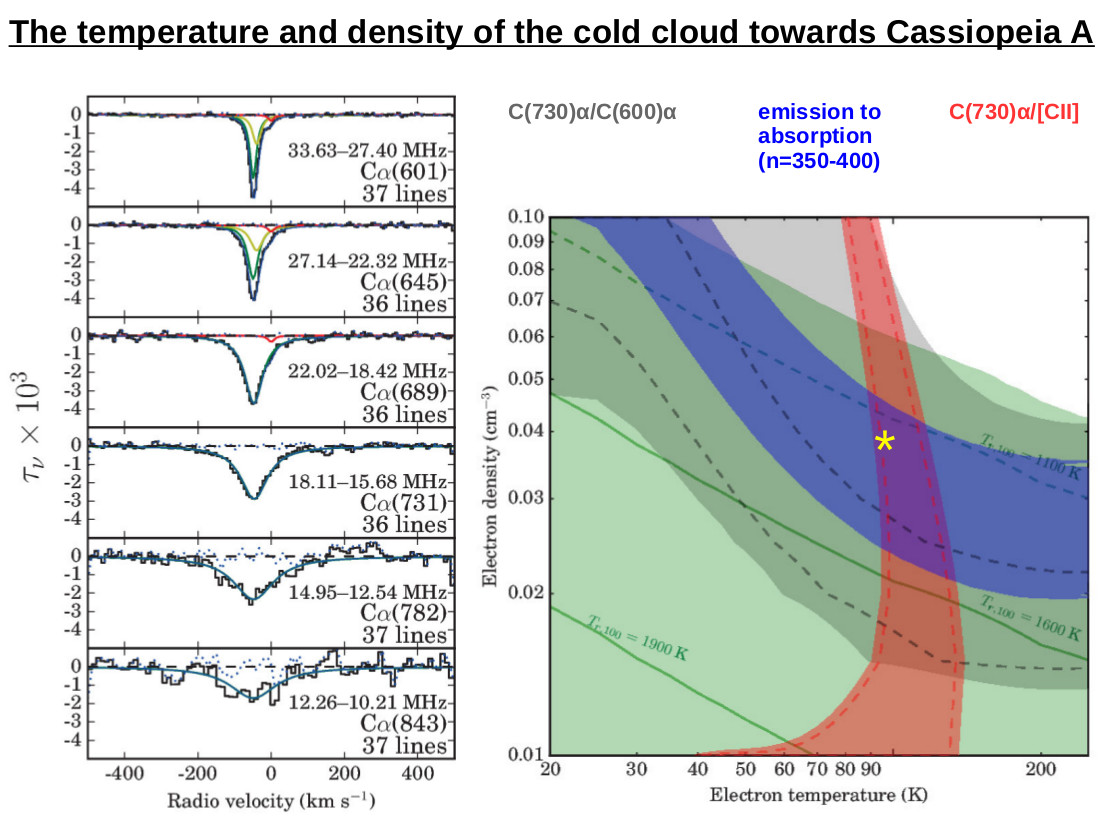| Description: | LOFAR is able to observe at high spatial, time and spectral resolution. The high spectral resolution allows us to detect and map low frequency radio recombination lines at unprecedented sensitivity. These lines provide an excellent diagnostic of the physical conditions of cold diffuse gas clouds in the interstellar medium. In a recently accepted paper Pedro Salas (PhD student at Leiden Observatory) and his team, including ASTRON astronomer Raymond Oonk, explore the use of the lowest frequency lines observable from Earth in the 10-33 MHz range. This frequency range is typically believed to be very difficult to calibrate due to increased presence of radio frequency interference and ionospheric scintillation. None the less Pedro achieved line detections towards the bright supernova remnant Cassiopeia A all the way down to 11 MHz - a new record! The resulting line spectra are shown on the left hand side of the figure and are associated with clouds of cold gas located between us and the supernova remnant. These detections also clearly show for the first time that at these low frequencies the lines are in local thermal equilibrium - consistent with a key prediction in our new line models (Salgado et al. 2016a,b). Finally the detections also show the excellent diagnostic power of low frequency radio recombination lines. In particular we find that the combination of low frequency radio recombination lines from carbon with the far-infrared [CII] 158 micron line provides a good thermometer of the cold gas. This is shown by the red shaded region in the right hand side of the figure. The results are published in Salas et al. (2017) and available at: https://arxiv.org/abs/1701.08802
Figure: (Left) Spectra showing radio recombination line absorption from carbon in the frequency range from 10-33 MHz. The lowest frequency detection at 11 MHz corresponds to a line transition with principal quantum energy level n=843. From this we can infer that the electron responsible for the observed line emission orbits the carbon nucleus at a distance of 1 micron. (Right) Constraints of the physical conditions of the radio recombination line emitting gas from two low frequency absorption line measurements with, (i) an emission line measurement (blue shaded region), and (ii) the far-infrared [CII] 158 micron line (red shaded region). From just these 4 measurements we determine the temperature and density of the gas to within 25 percent and find it to be in good agreement with the detailed analysis of Oonk et al. 2017 (yellow asterisk). |

